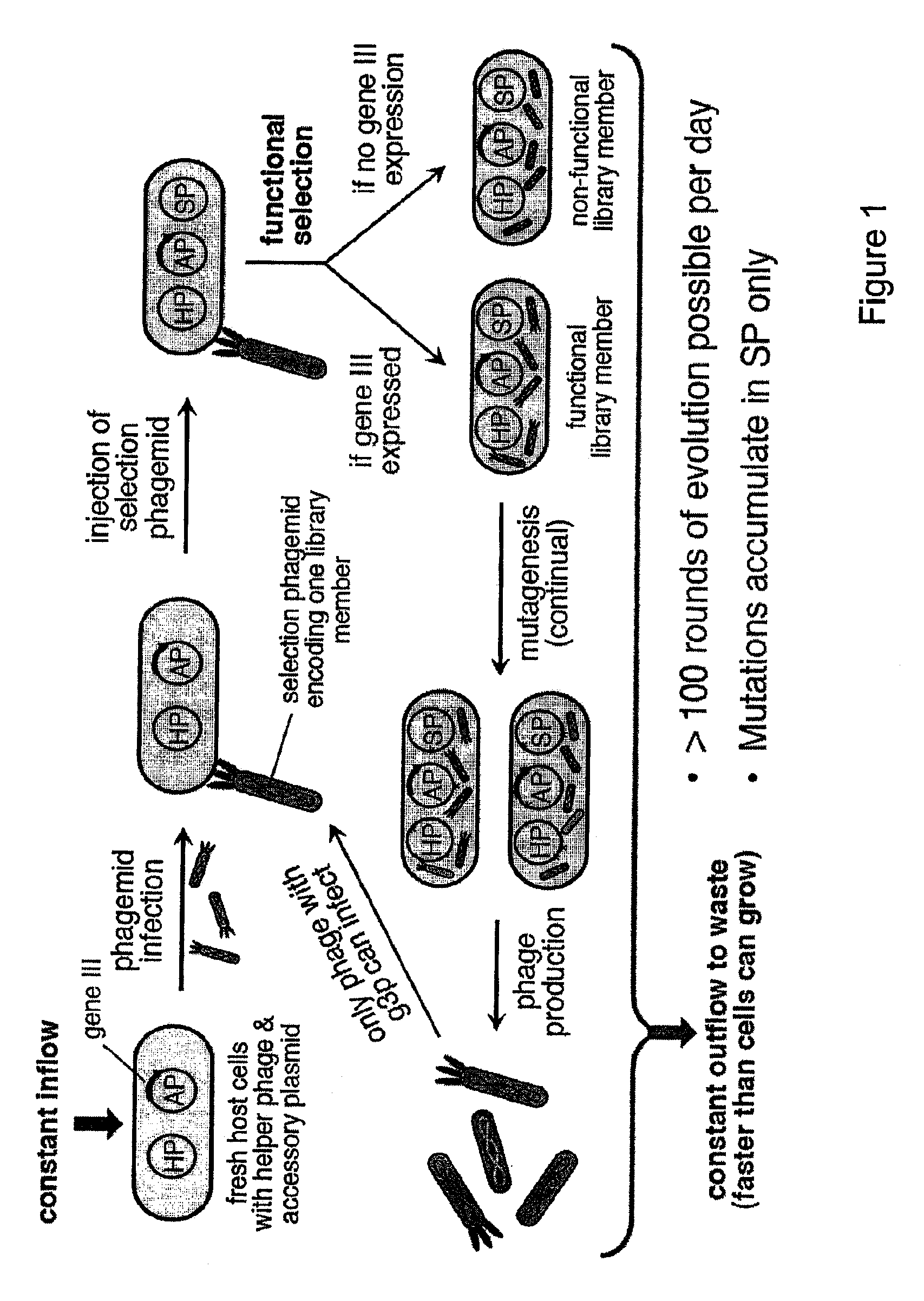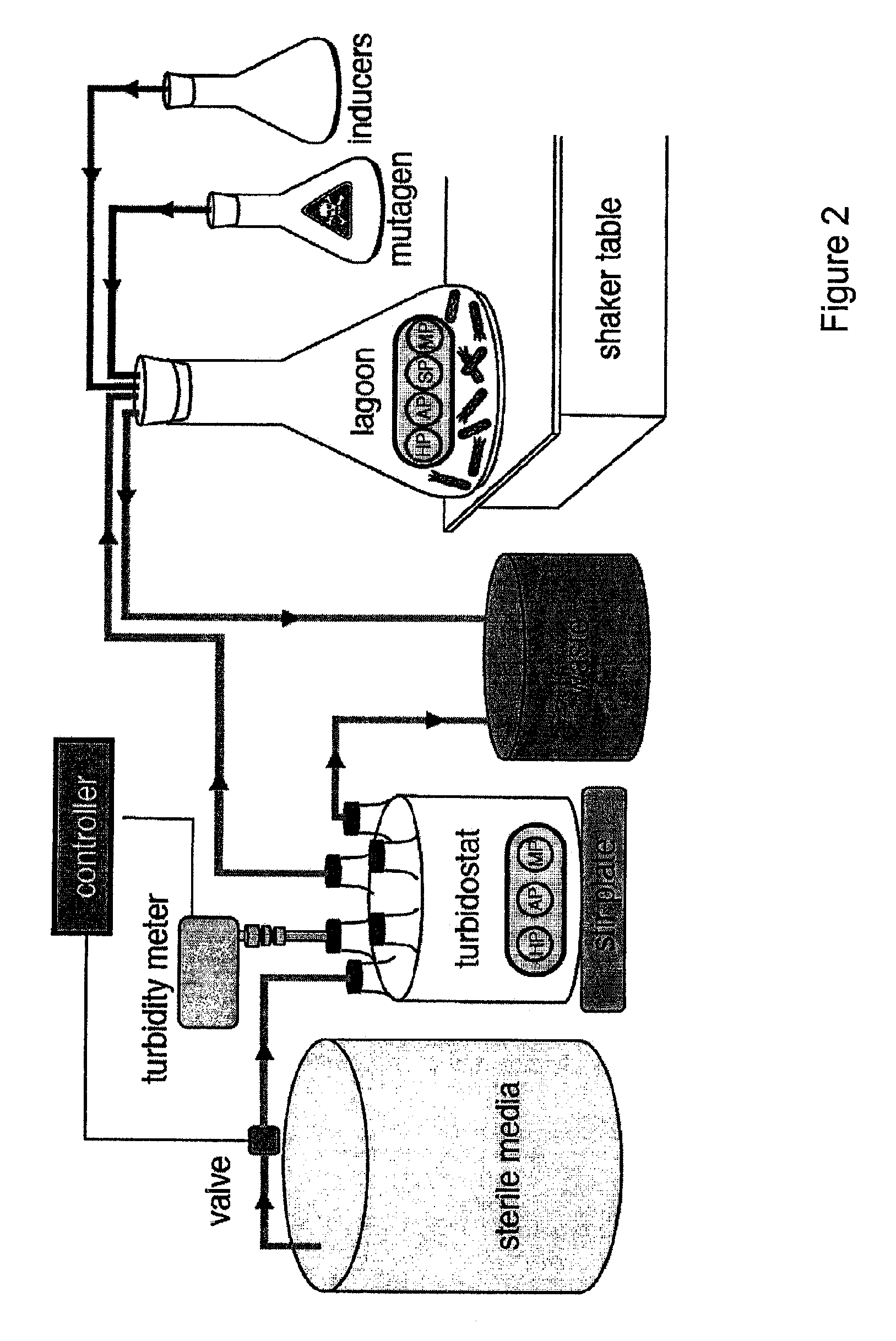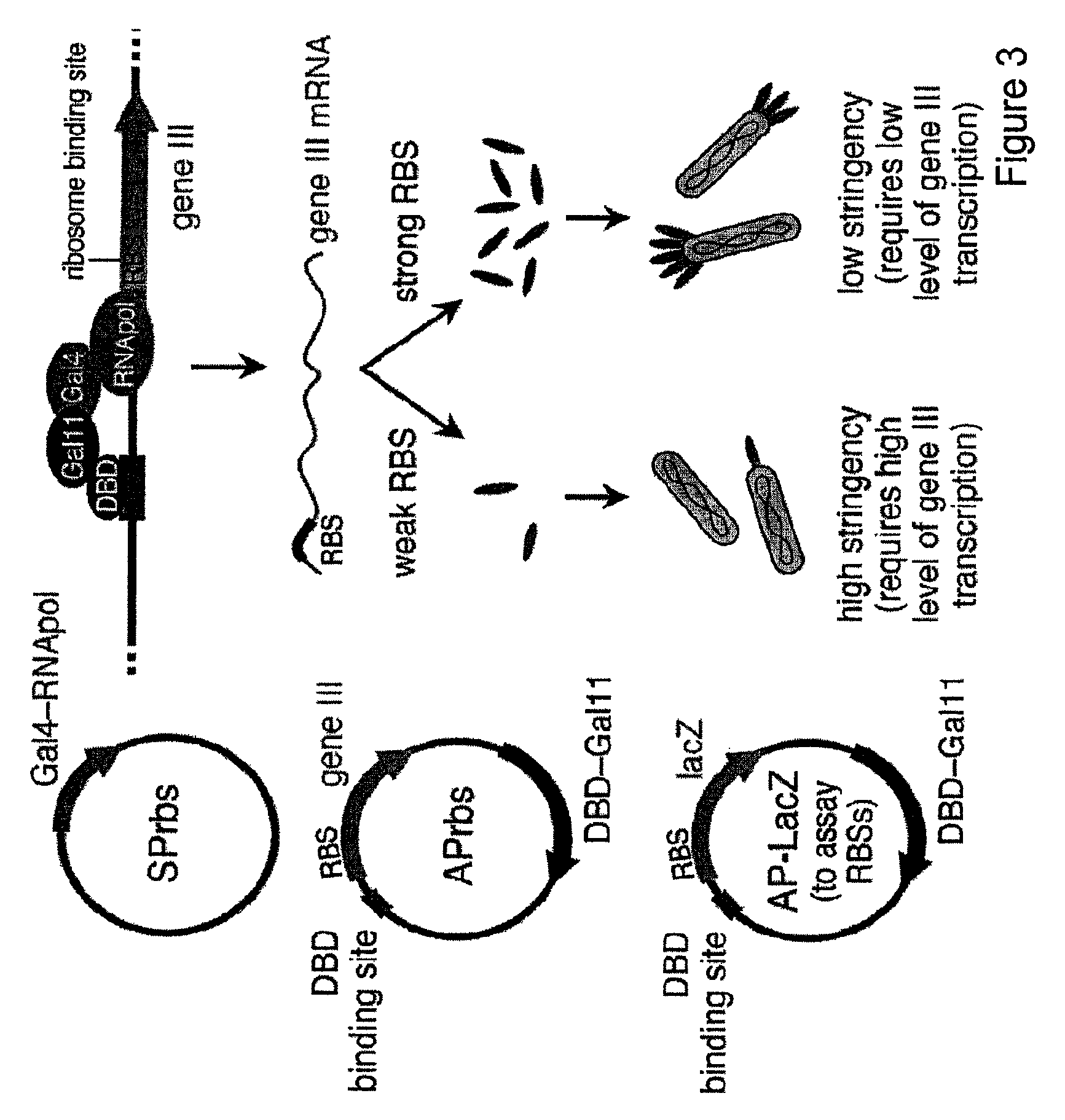Continuous directed evolution of proteins and nucleic acids
a nucleic acid and nucleus technology, applied in the field of diversification of nucleic acids and proteins, can solve the problems of not being able to generalize the system to evolve protein functionalities, fewer novel structures accessible, and sharp limitations
- Summary
- Abstract
- Description
- Claims
- Application Information
AI Technical Summary
Benefits of technology
Problems solved by technology
Method used
Image
Examples
example 1
Design and Testing of a Continuous Directed Evolution System
[0112]The life cycle of the filamentous bacteriophage (FIG. 7) represents an ideal framework for a general continuous directed evolution system. Filamentous phages do not lyse their hosts; instead, the host bacterium continuously secretes phages at the cost of reduced host cell growth rate. Infection requires the phage gene III protein (g3p) to contact the F pilus and TolA receptor of a host cell. Phage unable to produce g3p are >109-fold less infectious than wildtype phage.
[0113]The continuous evolution system of the present invention comprises four biological components: (i) a host E. coli cell; (ii) a “helper phagemid”, present in all host cells, encoding all phage proteins except g3p; (iii) an “accessory plasmid”, present in all host cells, that expresses gene III in response to an active library member; and (iv) a “selection phagemid” expressing the library of proteins or nucleic acids being evolved, which is replicate...
example 2
Evaluation of Recombinase Suitability for Continuous Evolution
[0118]Recombinases of the Tn3 serine recombinase family naturally bind to their recognition sites as dimers, with the catalytic domains dimerizing at the central dinucleotide cleaved during recombination. Replacing the native Tn3 DNA-binding domain with the Zif268 zinc finger results in recombinase recognition of half-sites consisting of the nine nucleotides bound by Zif268, followed by a ten-nucleotide region inherited from the Tn3 recognition sequence and the central dinucleotide. However, it is not known how many of the ten inherited nucleotides flanking the central dinucleotide are required for Tn3 activity. A recombinase enzyme ideally suited for targeting with evolved zinc-finger domains should have minimal sequence requirements other than the zinc-finger programmed sequence flanking the central dinucleotide. In addition, to control the orientation with which recombination takes place, the central dinucleotide recog...
PUM
| Property | Measurement | Unit |
|---|---|---|
| apparent dissociation constant | aaaaa | aaaaa |
| lengths of time | aaaaa | aaaaa |
| flow rate | aaaaa | aaaaa |
Abstract
Description
Claims
Application Information
 Login to View More
Login to View More - R&D
- Intellectual Property
- Life Sciences
- Materials
- Tech Scout
- Unparalleled Data Quality
- Higher Quality Content
- 60% Fewer Hallucinations
Browse by: Latest US Patents, China's latest patents, Technical Efficacy Thesaurus, Application Domain, Technology Topic, Popular Technical Reports.
© 2025 PatSnap. All rights reserved.Legal|Privacy policy|Modern Slavery Act Transparency Statement|Sitemap|About US| Contact US: help@patsnap.com



